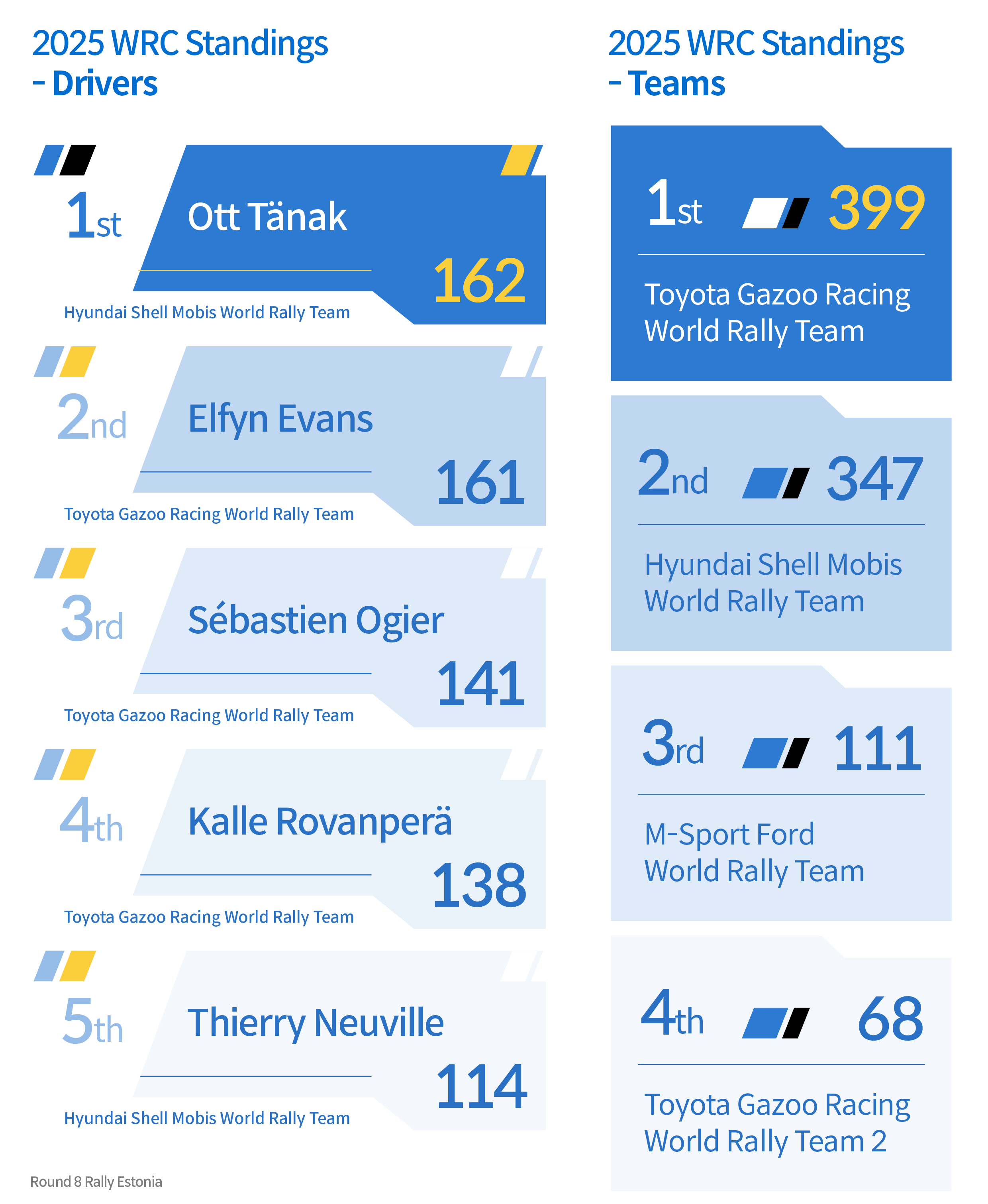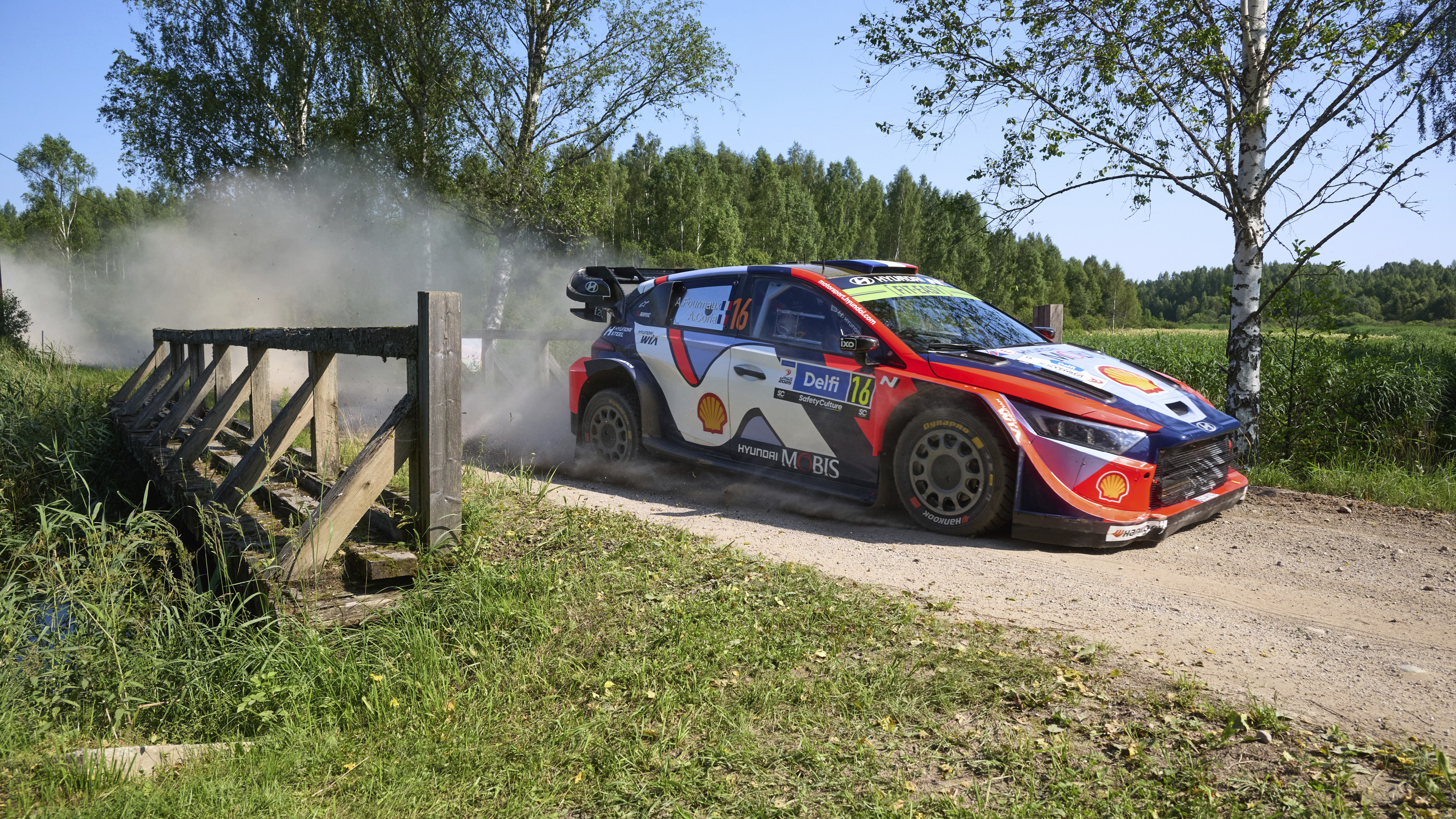
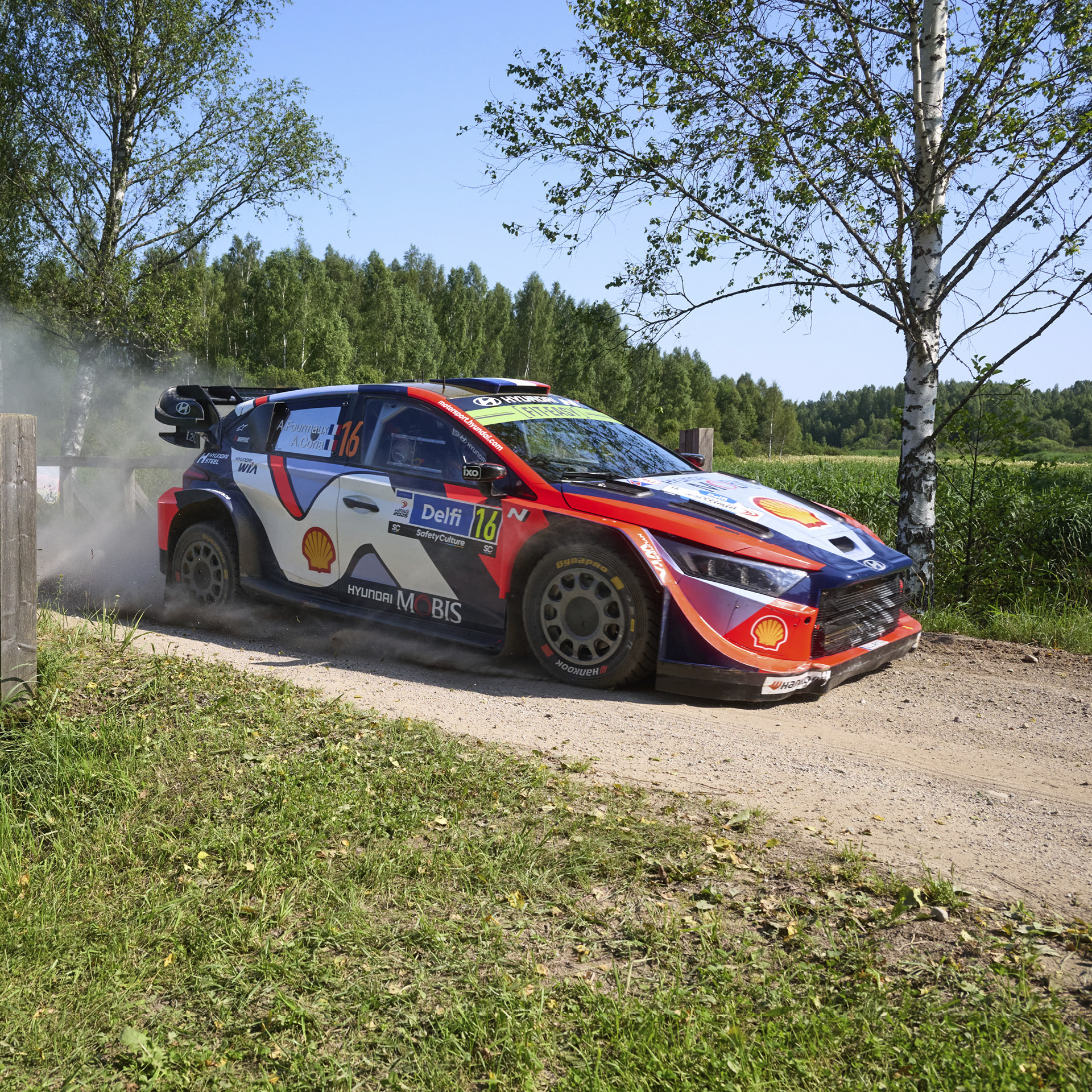


2025.07.30 Hyundai Motorsport Team
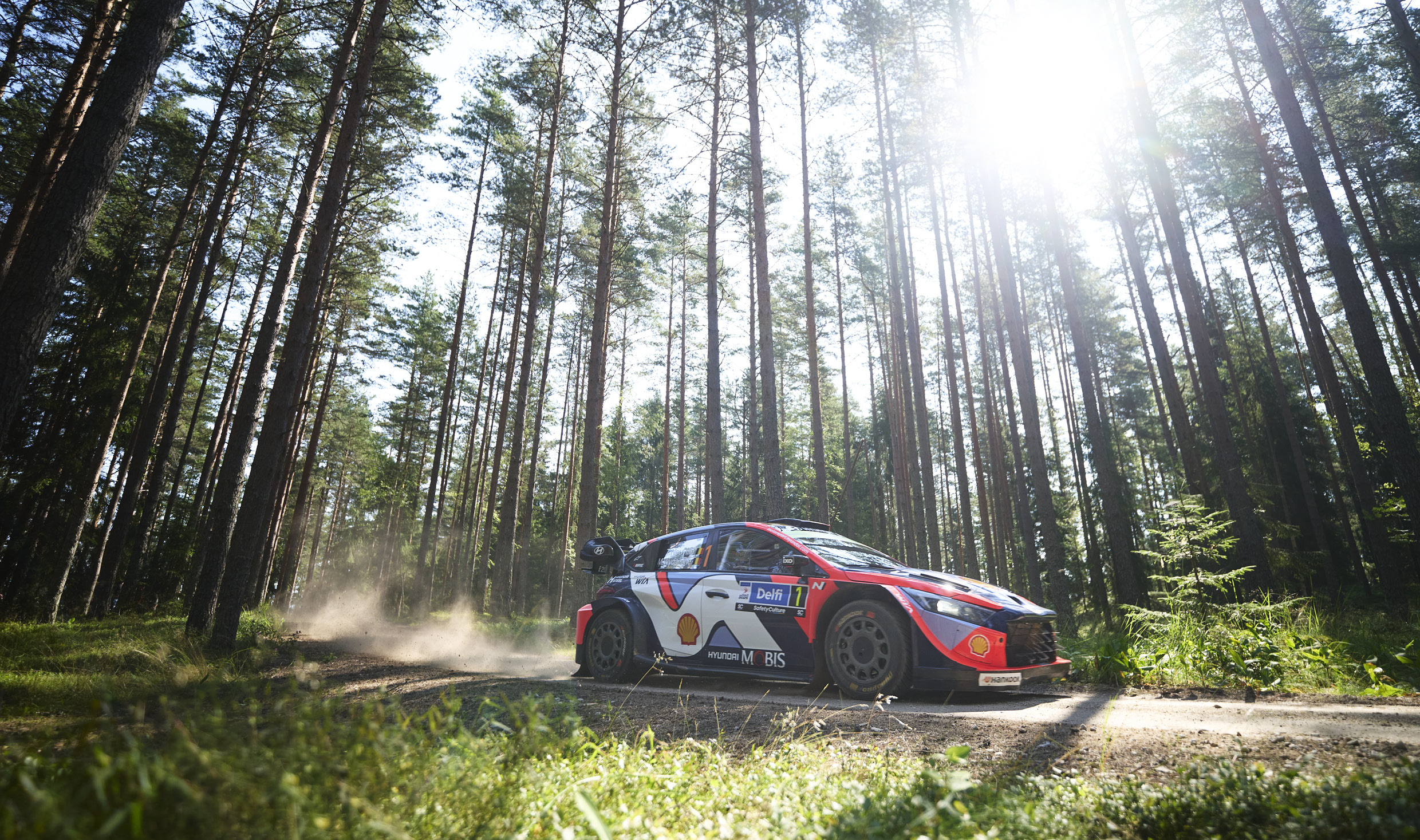
The first half of the season wrapped up in the brutal heat of the Acropolis Rally, and now the second half kicked off with the high-speed gravel blast through Estonia. Together with Finland, Estonia is known as one of the fastest events on the WRC calendar. Nestled between the Baltic Sea to the west and Russia to the east, this small Nordic country has been part of the European Union since 2004.
The Rally Estonia is the biggest motorsport event in the country, first launched in 2010. It joined the European Rally Chanpionship in 2014 and became part of the WRC calendar in 2020. Traditionally held just before Rally Finland, it often serves as a warm-up due to similar road conditions. Now in its 15th year, the 2025 edition once again used Estonia’s second-largest city, Tartu, as the host. The stages looped through surrounding towns like Otepää, Elva, Kanepi, Kastre, and Peipsiääre.
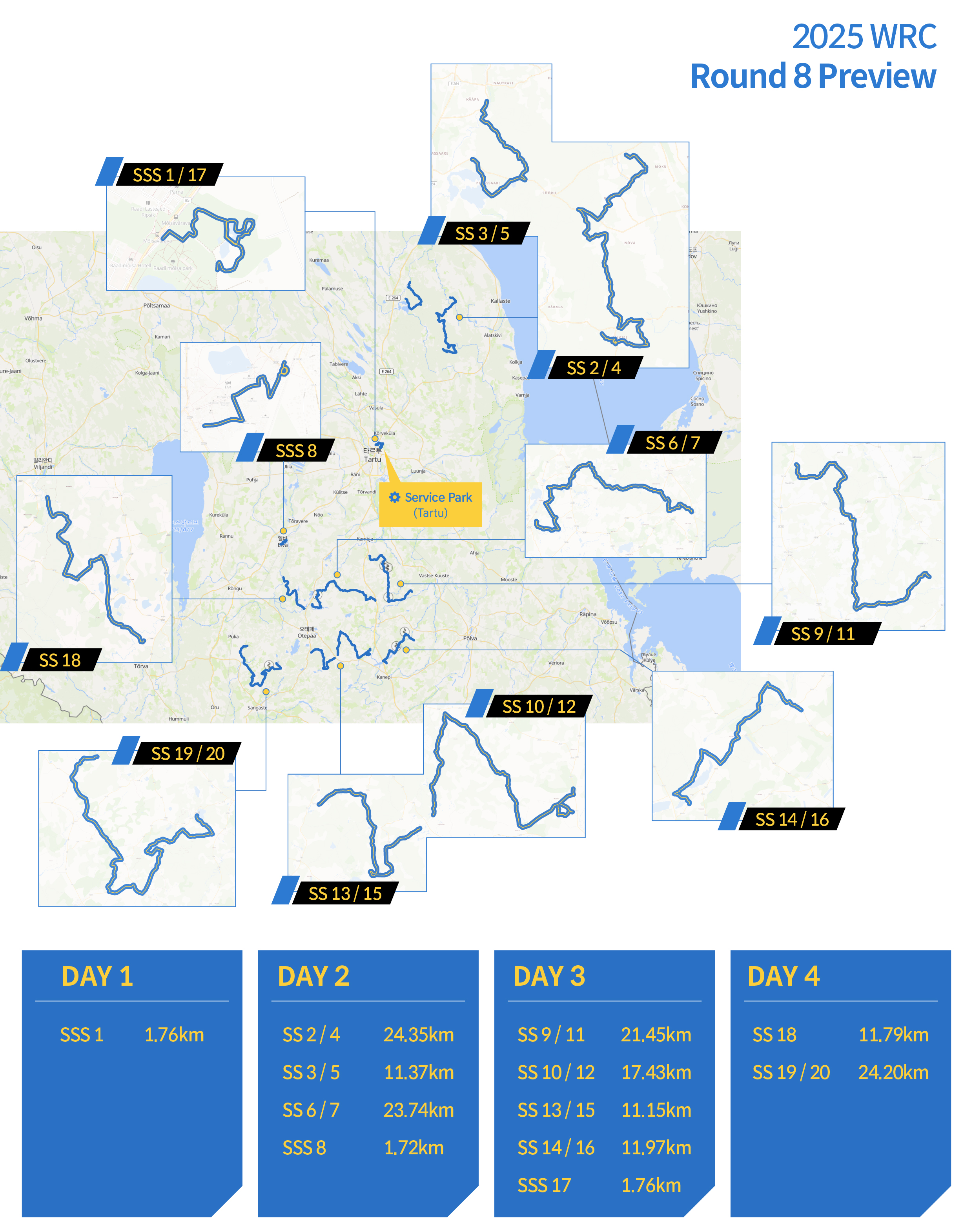
This is a rally built for speed. Twisting through the hilly forests of southern Estonia, the stages mix wide high-speed straights with narrow, technical sectors. With average speeds exceeding 120 km/h (75 mph), there’s little room for error—especially with countless blind jumps that hammer drivers with relentless intensity.
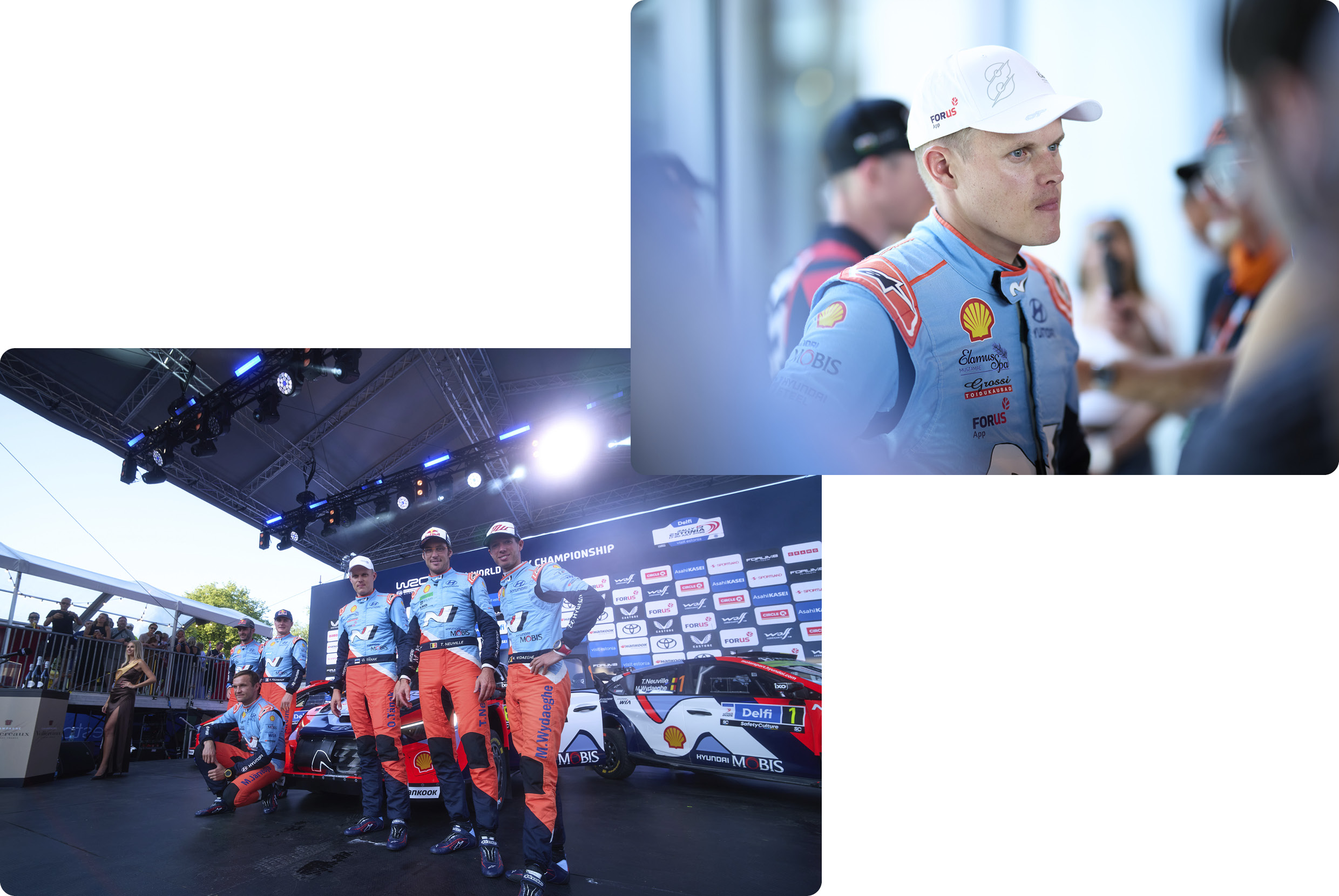
Hyundai Shell Mobis World Rally Team fielded the same trio of Thierry Neuville, Ott Tänak, and Adrien Fourmaux. Estonia is Tänak’s backyard, and he owns the most wins at this event with four victories since 2014. Hyundai, too, has fared well here, bagging seven podium finishes over the past four years. Tänak commented ahead of the weekend: “We’ve just finished three rough rallies where we showed some strong performance.”
“Now, we move on to a different challenge – Rally Estonia is the first of two really fast and smooth gravel rounds, which I personally enjoy because they are the type of roads I learnt to compete on. These events are purely performance based, meaning they ask a lot from the car – the gaps will be small and speeds will be high. The setup needs to be very precise and balanced, and the aerodynamic package also plays a big role.”

Neuville, last year’s drivers’ champion, had slipped to fifth in the standings after a tough run. But he’s had podiums in Estonia in both 2021 and 2023. he ad-ded. “It’s been a challenging start to the season, despite trying our hardest to avoid issues,” Neuville admitted. “But we had a good feeling in the car in Greece and need to capitalize on that.”
“Rally Estonia is an event with a great atmosphere, and I have finished on the podium there a few times,” he ad-ded. “We need to have total trust and confidence in the car because of the fast roads and big jumps, so suspension and grip are key parts of our setup.”
Fourmaux, who ended a string of retirements with a third-place finish in Greece, was also looking up. “To get a podium in our lead up to this year’s fast rallies is important for the team and great for my confidence, it’s given us the boost we need for Rally Estonia. We need to bring back some good points for the team, and our aim for the end of the weekend is to finish on the podium once again. With such high speeds at this round, we need a car with good balance and grip. Reactivity is super important, but there needs to be a balance between that and the grip on the surface. I’ve had a lot of experience there in the past but it’s very unpredictable; the ground is softer than Finland, so if it rains it can get very rutted very quickly. Precision is essential to not get caught out here,” said Fourmaux.
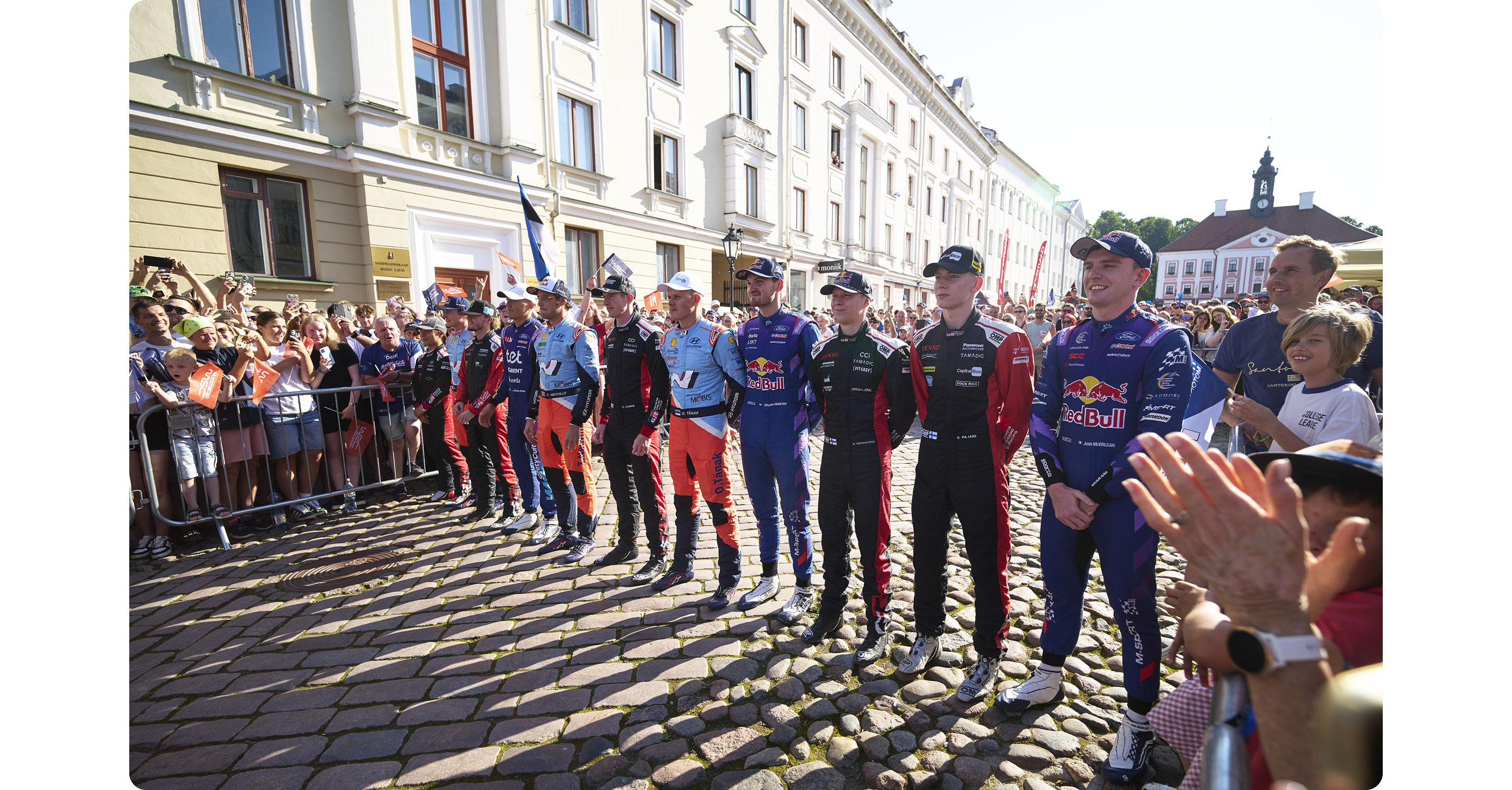
Toyota brought five Rally1 cars to Estonia, but the driver lineup saw some changes. Elfyn Evans, Kalle Rovanperä, and Takamoto Katsuta remained, along with Sami Pajari from the satellite team. Evans and Rovanperä were tasked with scoring manufacturer points. Rovanperä had three wins in Estonia, second only to Tänak. Toyota also handed part-time duties to Oliver Solberg.
M-Sport Ford brought back Grégoire Munster, Josh McErlean, and part-time driver Mārtiņš Sesks. Munster had previously won the Junior WRC class here two years ago, while Sesks—being from neighboring Latvia—was very familiar with the terrain.
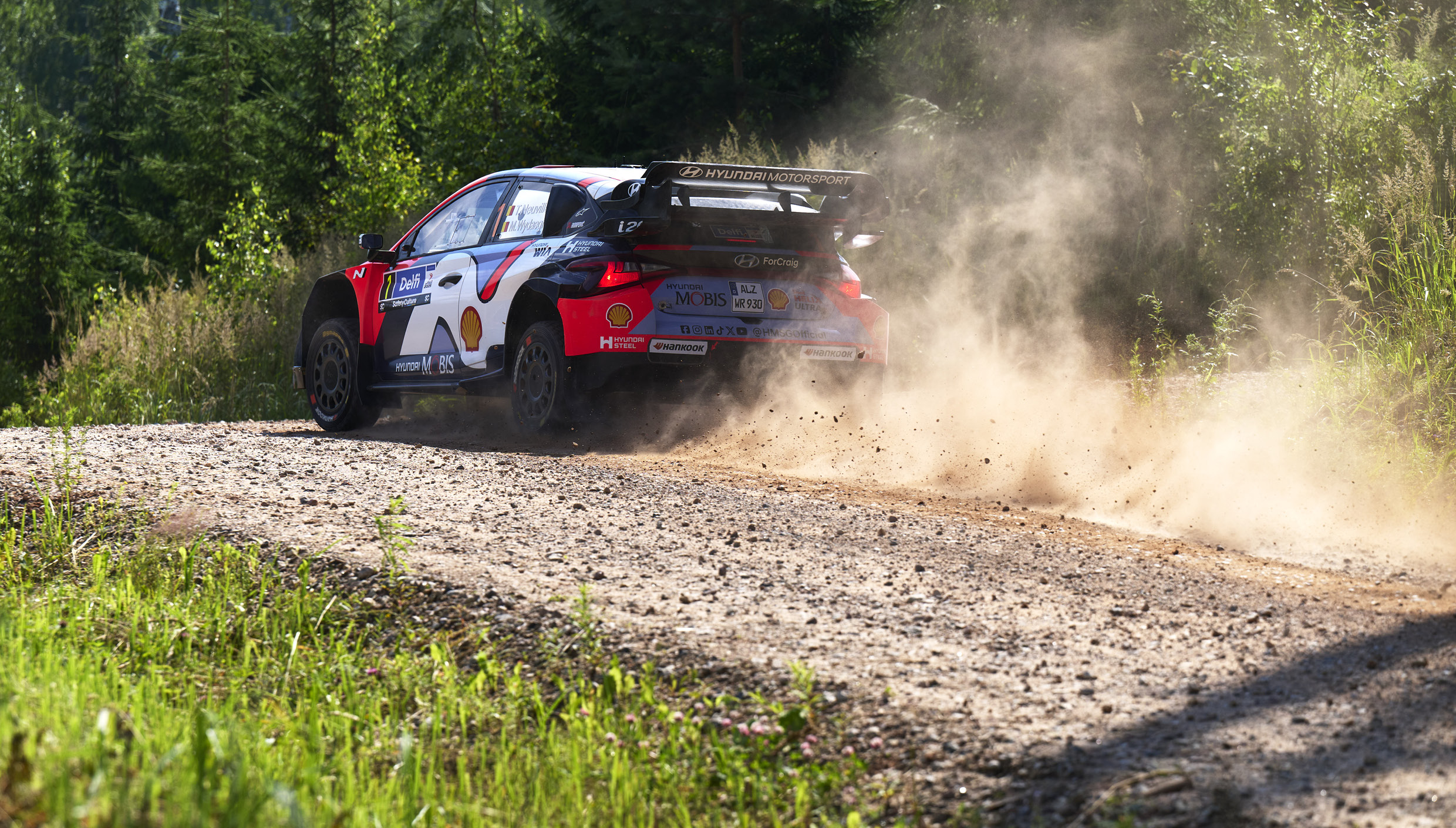
The rally officially kicked off Thursday evening, July 17, at the northern edge of Tartu in the parkland of Mõisamaa. As in 2023, the surface was a mix of gravel and tarmac, but this time the layout was different, and the stage was shorter—just 1.76 km. It was mostly made up of low- to mid-speed corners, and the rocks lining the road kept drivers from cutting too close. It may have been short, but the tricky nature of the course still claimed its share of victims.

In front of a packed crowd, Neuville set the top time. He took a gamble by ditching the spare tire, shaving weight, and edging Evans by 0.5 seconds to take the lead. “The big day is starting tomorrow. The target for us is to have fun in the car and go fast. In the end we target a podium,” Neuville said. Tänak followed 0.1 seconds behind Evans in third, with Rovanperä in fourth. Local WRC2 driver Robert Virves surprised everyone with a fifth-place finish, while Fourmaux ended the day in 12th.
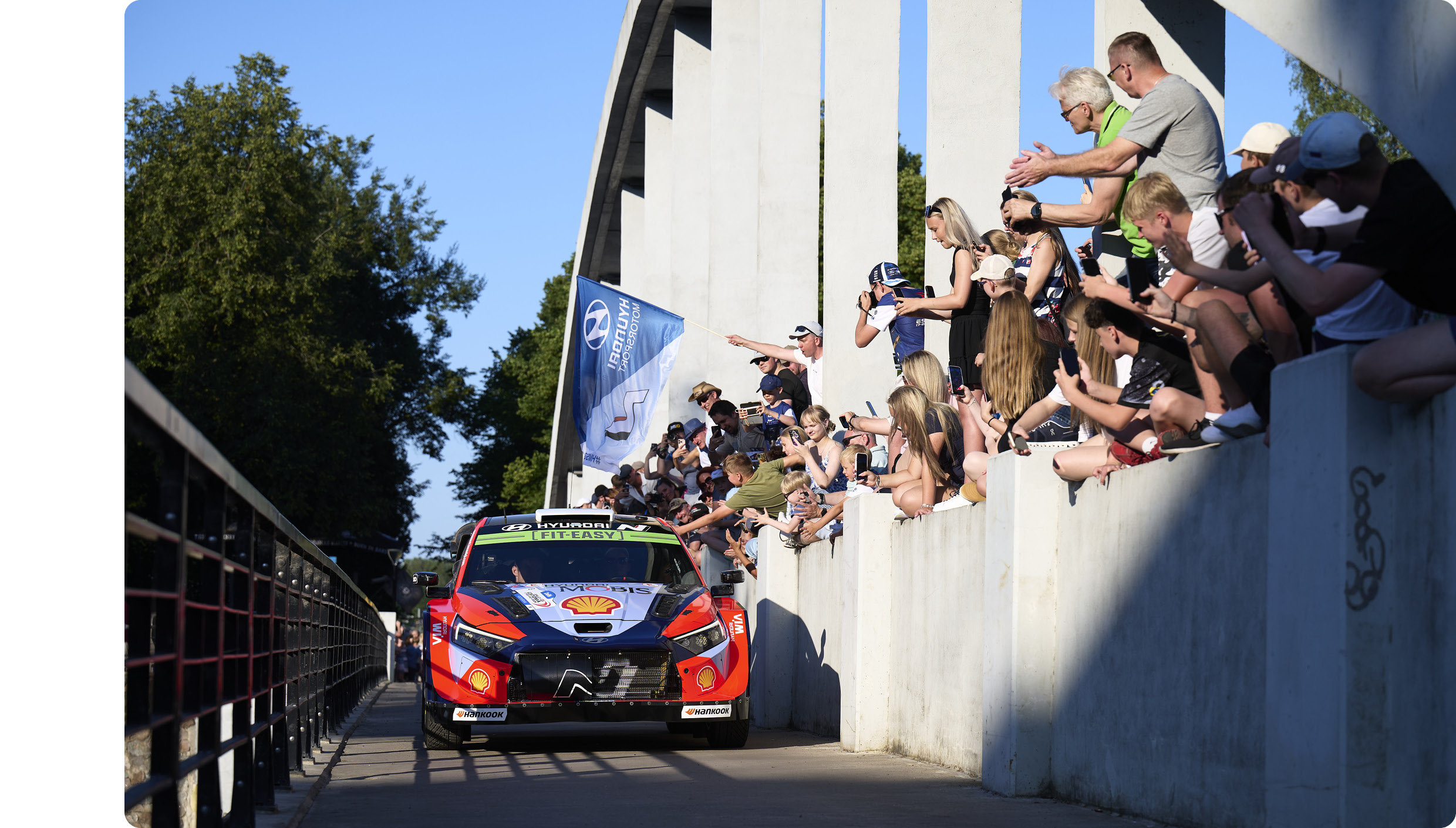
Friday morning, July 18, opened with the longest stage of the rally: 24.35 km through Peipsiääre, northeast of Tartu. That was followed by a run through Mustvee, repeated twice in the morning. In the afternoon, competitors headed south for two passes through Kambja and then wrapped up the day with a short city stage in Elva. Seven stages in total (SS2 to SSS8) covered 120.64 km.
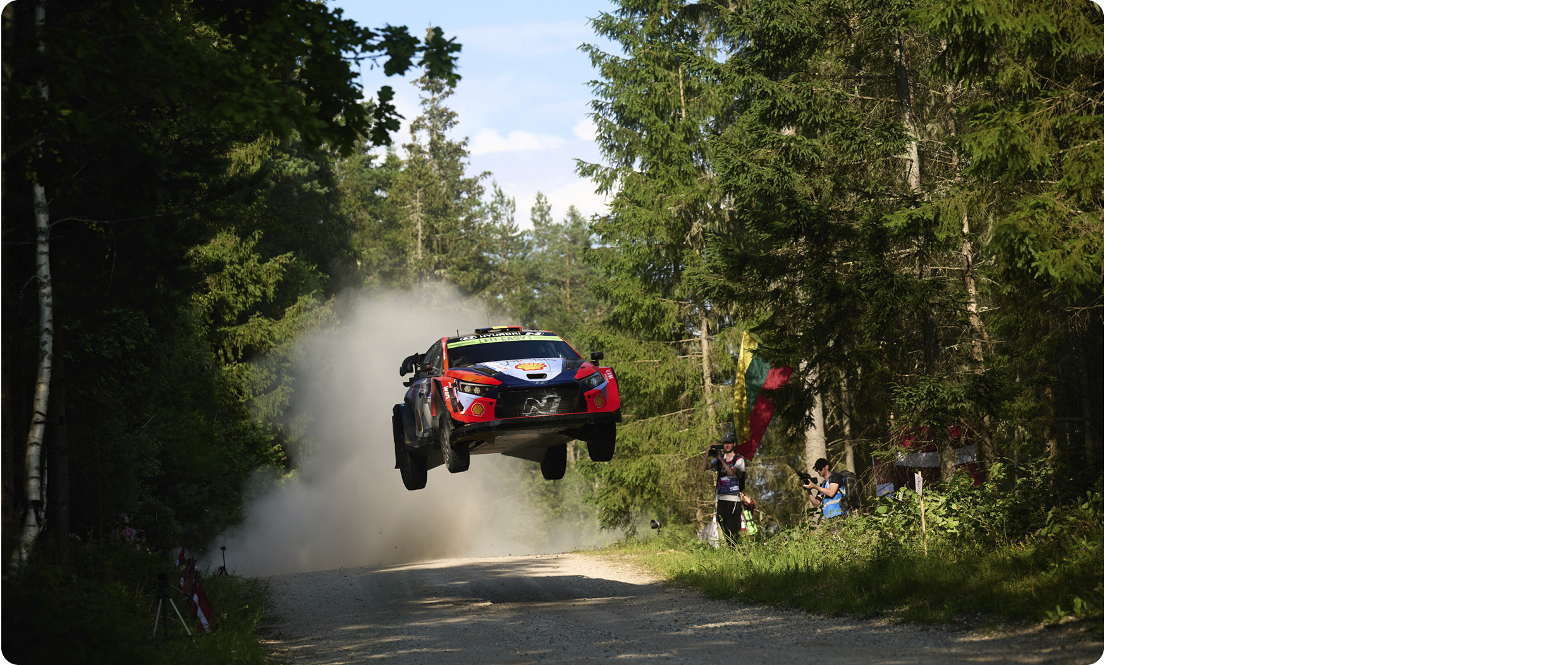
Peipsiääre began with a narrow, technical section before blasting through a quarry with manmade jumps, followed by fast gravel roads and two paved crossings. It ended again with narrow, twisty terrain. The rhythm changed constantly, testing adaptability. Mustvee had a redesigned layout and reversed direction. It started wide and fast, transitioned into a rutted forest, crossed a new gravel path at 4.7 km, and then tightened up significantly after the 8 km mark.

Shockingly, it was Solberg who dominated the morning—his first Rally1 outing in years. He won SS2 and SS4 in Peipsiääre. Tänak, despite handling issues, grabbed two wins in Mustvee but couldn’t catch Solberg. At midday, Solberg led with Tänak 8.5 seconds behind, followed by Rovanperä and Neuville. Katsuta struggled with understeer in fifth, Evans was sixth after road cleaning, and Fourmaux and Pajari rounded out the top eight.
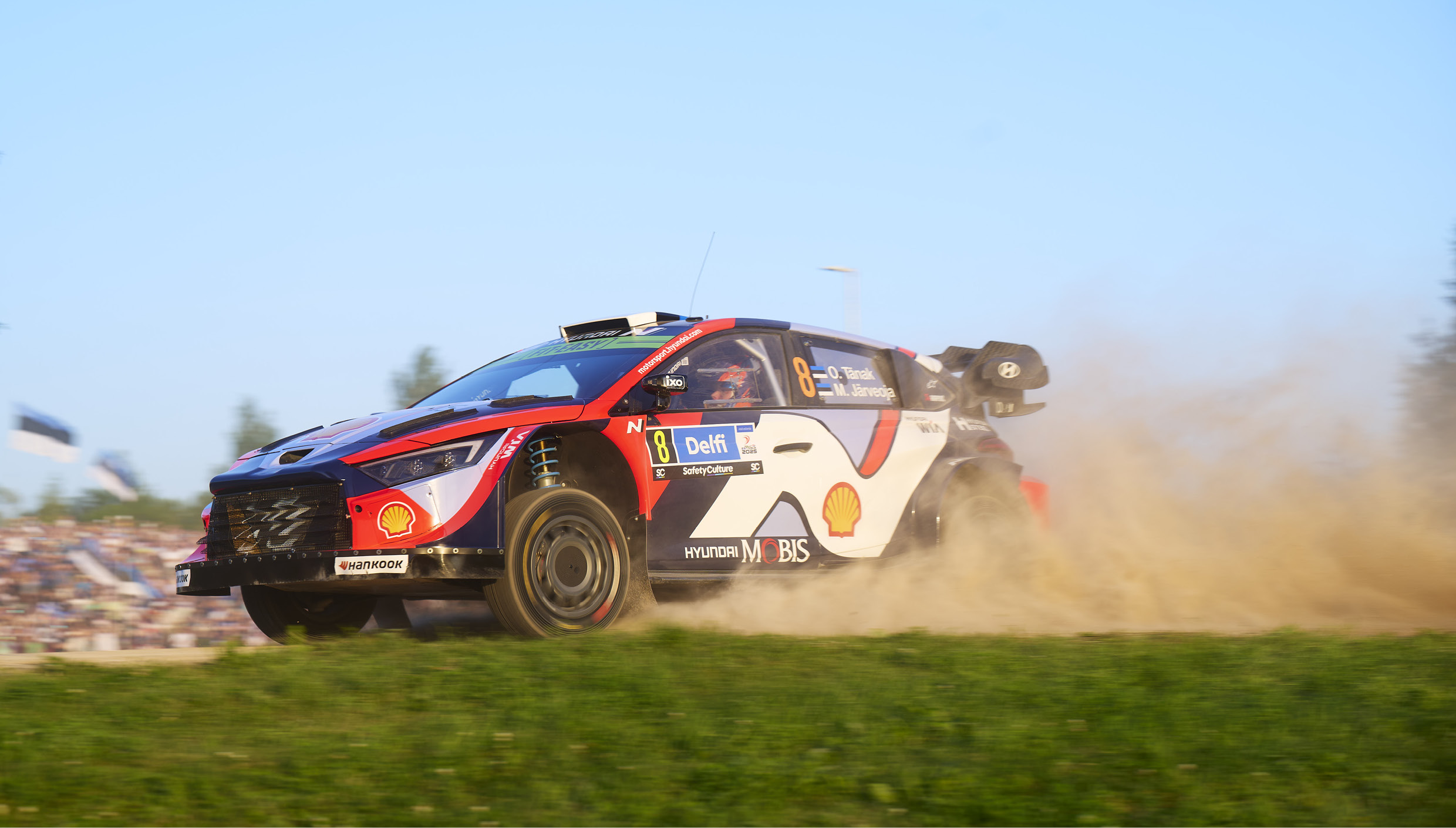
The afternoon’s Kambja stages were a true test of versatility: flowing gravel, jump zones, and sandy technical sectors across 23.74 km.
In SS6, a setup change paid off for Fourmaux, who posted the top time and moved into sixth. But SS7 saw Solberg bounce back, extending his lead over Tänak to 13.7 seconds. Fourmaux, just 0.3 seconds behind Solberg on that run, climbed to fifth. Katsuta’s pace faded due to understeer and intercom issues.

The day ended with the brand-new Elva Linn stage. Just 1.72 km through city streets, it featured tight turns and a double donut spin at the finish that delighted fans.
Neuville took the stage win, but the top eight were all within one second. Solberg retained the overall lead with a 12.4-second gap to Tänak. Neuville trailed Tänak by 1.8 seconds, followed by Rovanperä, Fourmaux, Katsuta, Evans, Pajari, Sesks, and McErlean.
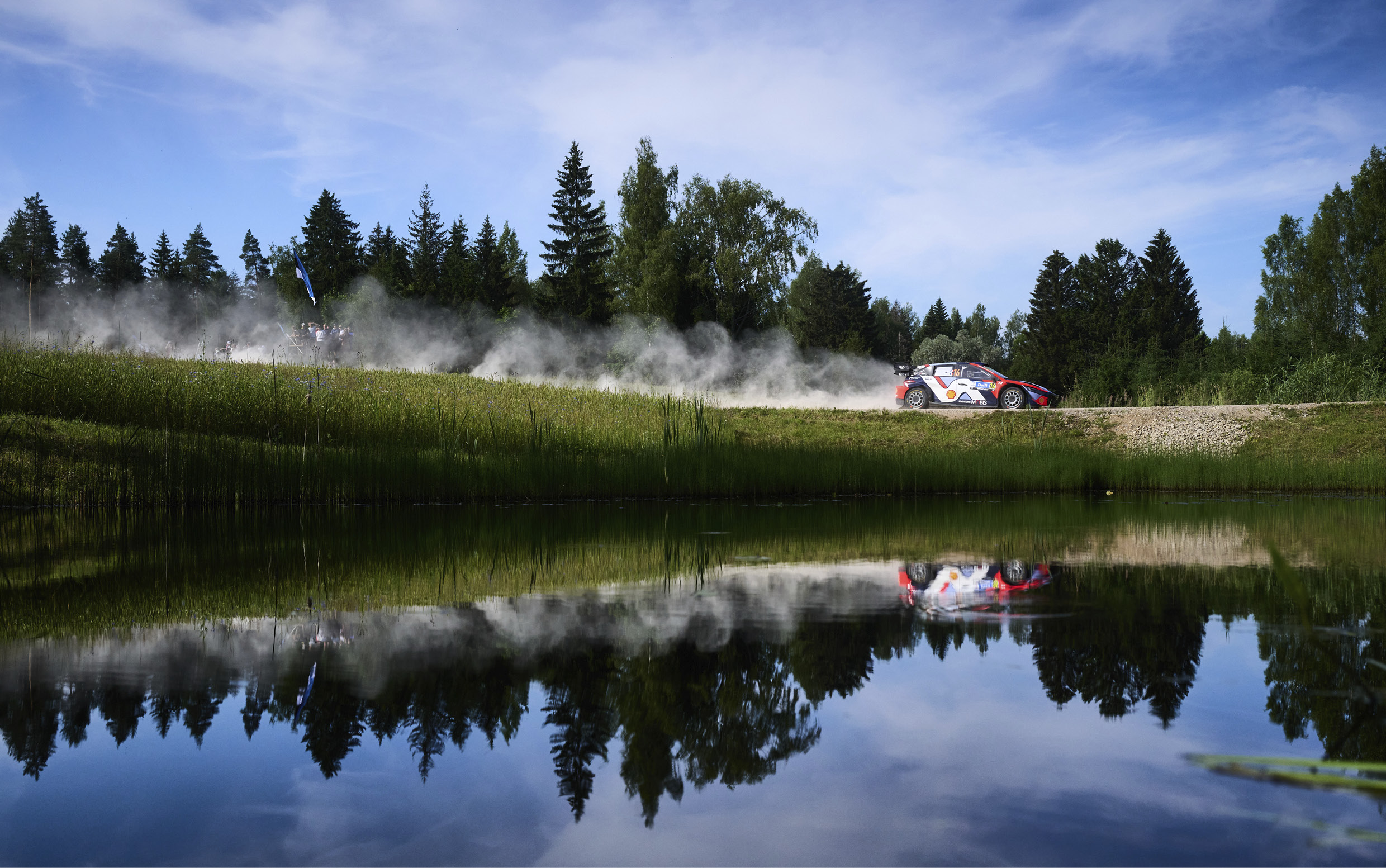
Saturday, July 19, began with the 21.45 km Raanitsa stage and two runs through Kanepi. In the afternoon, the action shifted to Otepää and Karaski—each run twice—before ending with a repeat of the Thursday Tartu city stage. Nine stages (SS9 to SSS17) covered a total of 125.76 km.
Solberg’s charge continued. He topped SS9 while Tänak lost time hitting a chicane, handing second overall to Neuville. Tänak dropped to third, but the gap was just six seconds. Solberg stayed hot through SS10 and SS11, taking three stage wins in a row. Tänak responded in SS10 by beating Neuville by 3.2 seconds and regaining second. But Neuville came right back in SS11, making it a neck-and-neck battle between the two Hyundai drivers—separated by less than half a second.
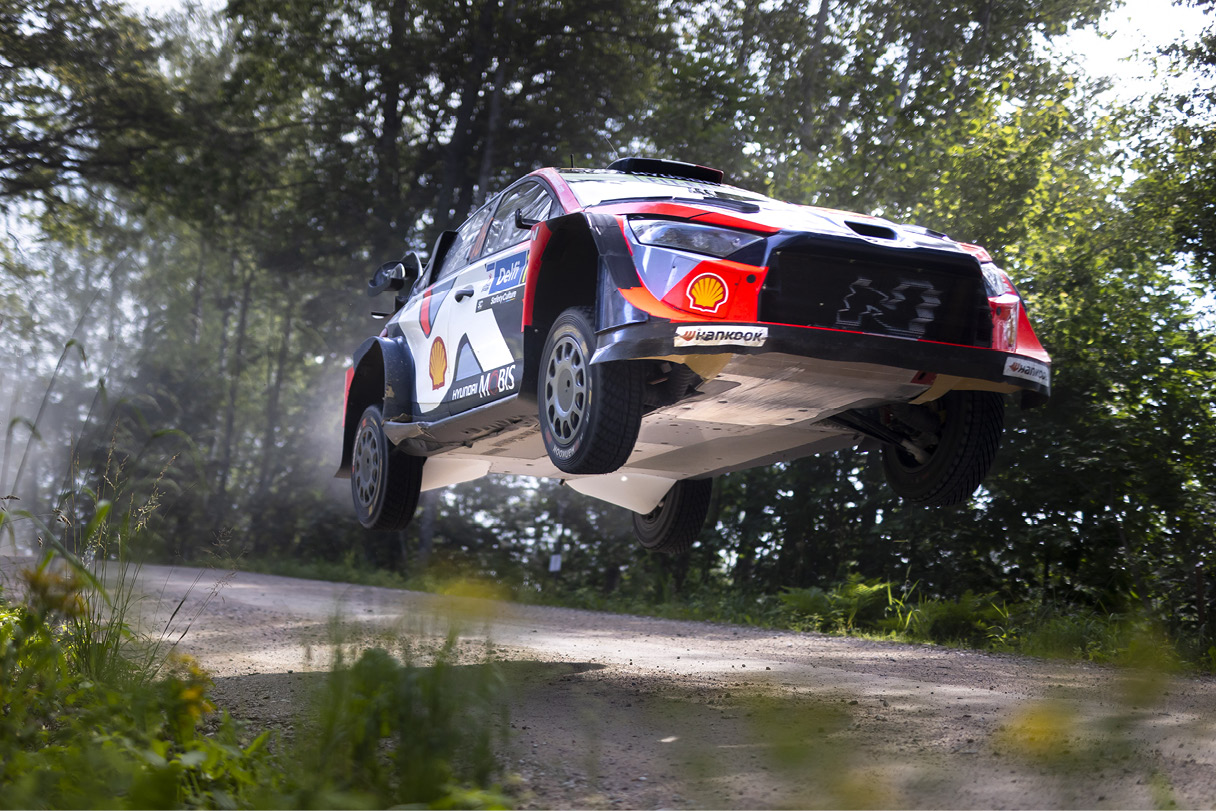
Tänak won SS12 but only cut Solberg’s lead by 0.5 seconds. The morning incident had damaged his front bumper, hurting aero balance. “Quite many mistakes this morning. Damaging the front bumper, no front aero and in high speed like this it's quite tricky. Hopefully it'll be better than this morning.” Meanwhile, Neuville dealt with dust flying into the cockpit through a broken window.

The 11.15 km Otepää (SS13, SS15) was short but diverse: wide and fast to start, then a huge jump at 3.8 km, followed by high-speed crests. Karaski (SS14, SS16) began with smooth medium-speed corners, then a steep hairpin at 2.3 km, and rolling crests to follow. A paved section briefly broke the flow before a narrow finish.

Neuville won SS13 with different settings, followed by Tänak and Solberg. The Hyundai pair kept closing in but were locked in a fierce battle for second place. Tänak won SS14 by just 0.1 seconds over Solberg.
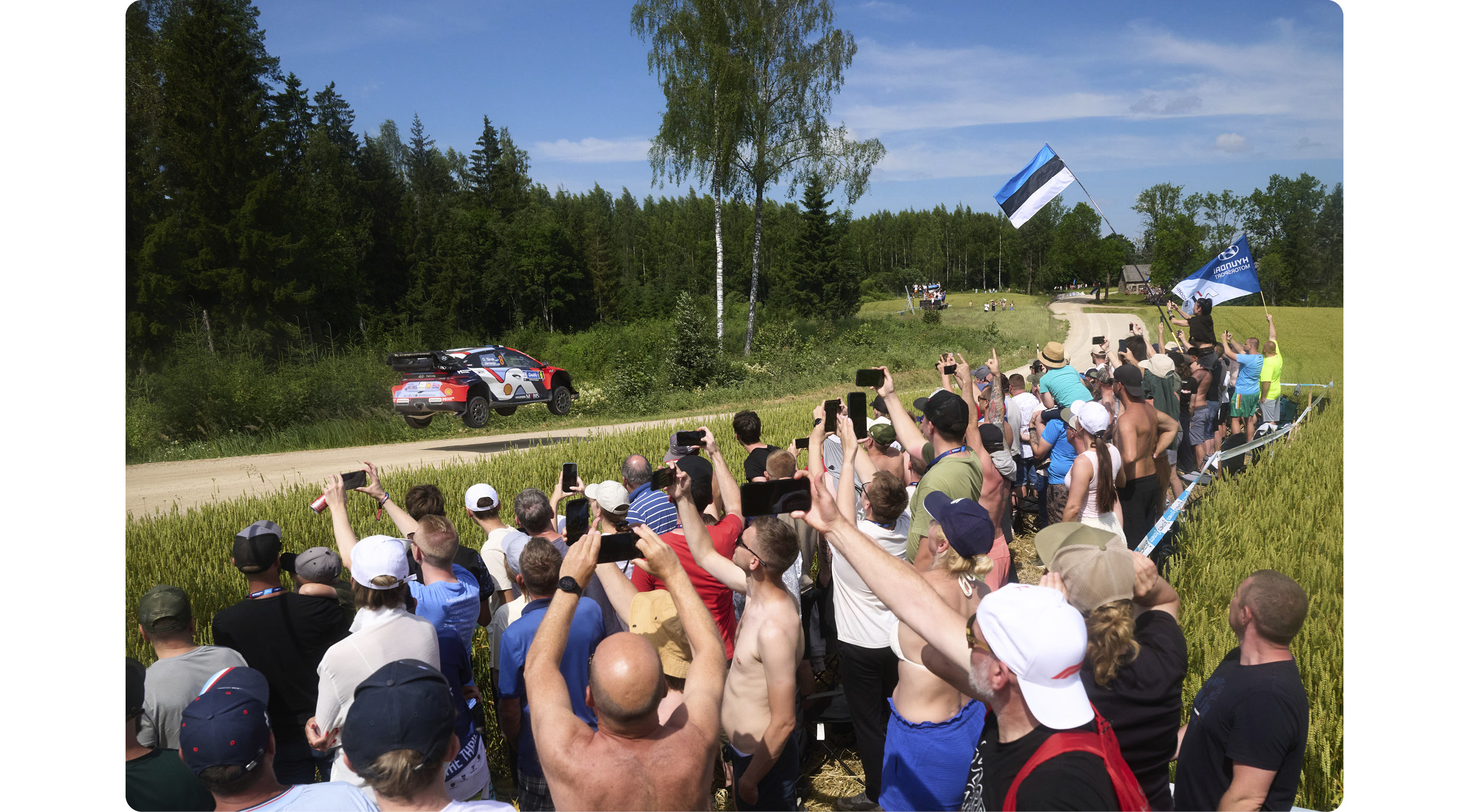
Solberg answered in SS15, then Tänak in SS16. Neuville won SSS17 in the Tartu city stage. As Saturday ended, Solberg still held the lead. Tänak was second, 21 seconds back, with Neuville another 4 seconds behind. Rovanperä was 26.5 seconds behind Neuville. Behind them: Fourmaux, Katsuta, Evans, Pajari, Sesks, McErlean, and Munster. In WRC2, locals Virves and Linnamäe led the field, followed by Korhonen and Heikkilä.
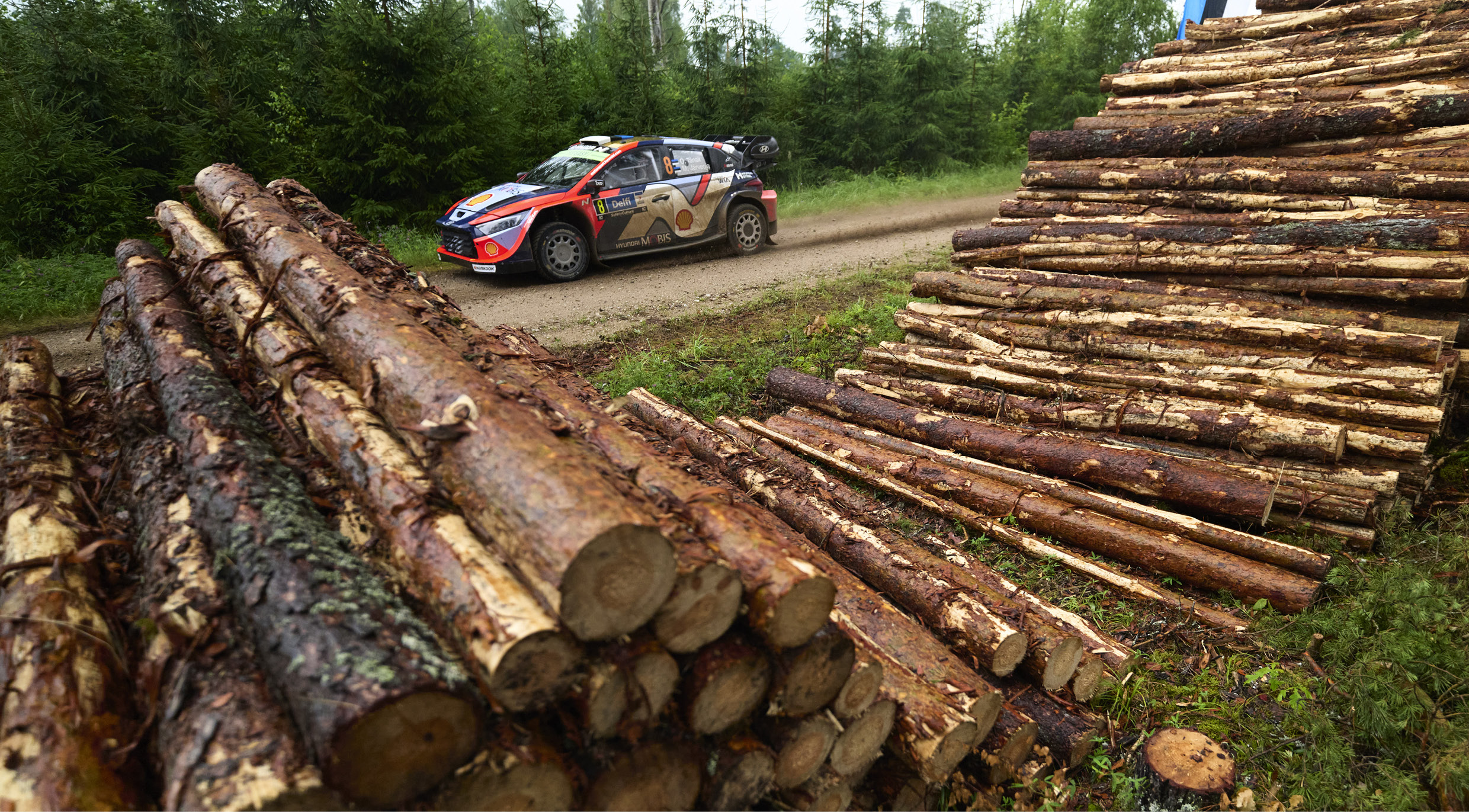
Sunday, July 20, featured all-new stages. The day opened with the narrow and fast 11.79 km Hellenurme, followed by two runs through the 24.2 km Kääriku, with the final pass serving as the Power Stage. The three-stage final day totaled 60.19 km. Rain was a possible wildcard. Crucially, Solberg had never driven the Yaris Rally1 in wet conditions.
Hellenurme was anything but easy, with tight roads and fast sections. Solberg stayed strong, beating Tänak by 1.6 seconds to keep his lead. Tänak remained second, while Evans was closing in on Katsuta for fifth.
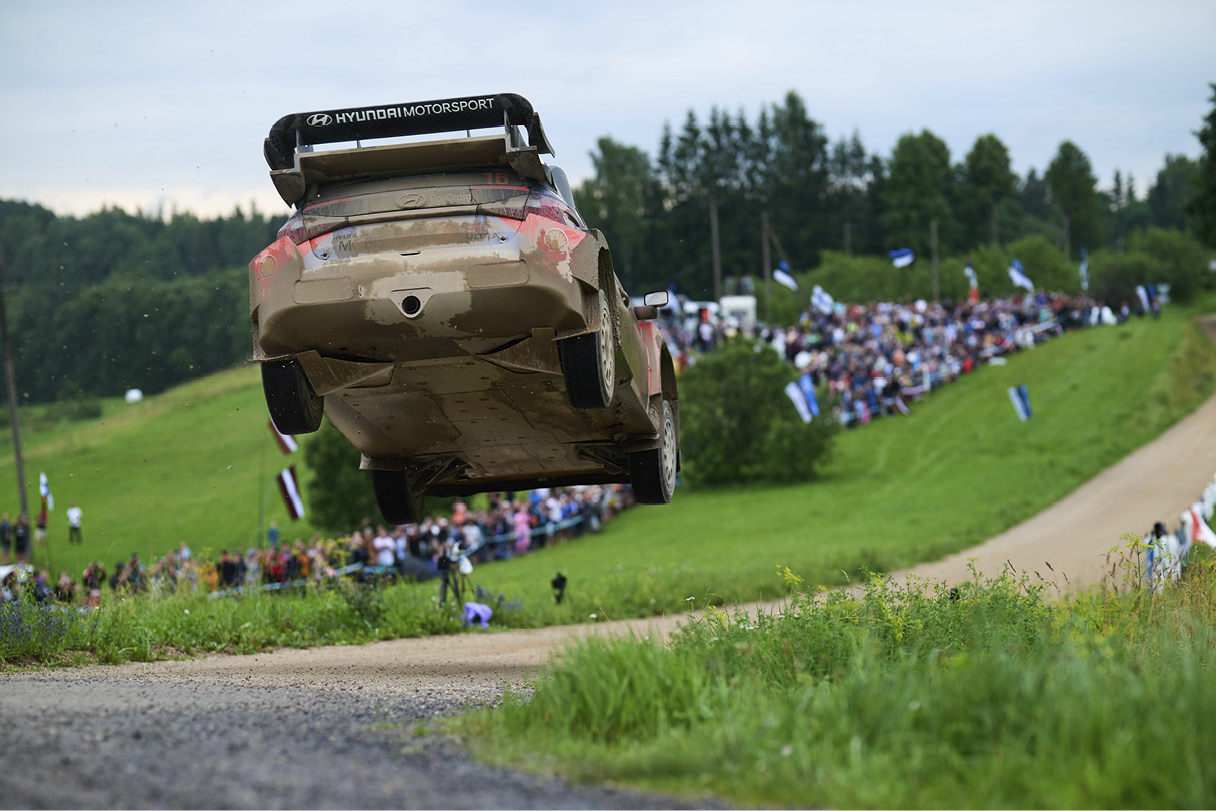

Kääriku, also new, doubled as the final and Power Stage. Solberg went fastest in SS19, pulling closer to his first WRC win. Neuville, however, received a 10-second penalty for jumping the start, shrinking his gap to Rovanperä to just 9.9 seconds.
In SS20, the final Power Stage, the rain let up and the roads dried. Rovanperä set the fastest time, followed by Tänak, Solberg, and Neuville. Solberg backed off slightly, but it was enough to secure his maiden WRC win. Tänak finished second, with Neuville third. Fourmaux held on to fifth despite front-end damage. Evans, Pajari, Sesks, McErlean, and Munster followed. WRC2 went to local hero Virves. Katsuta retired just before the final stage due to mechanical issues.
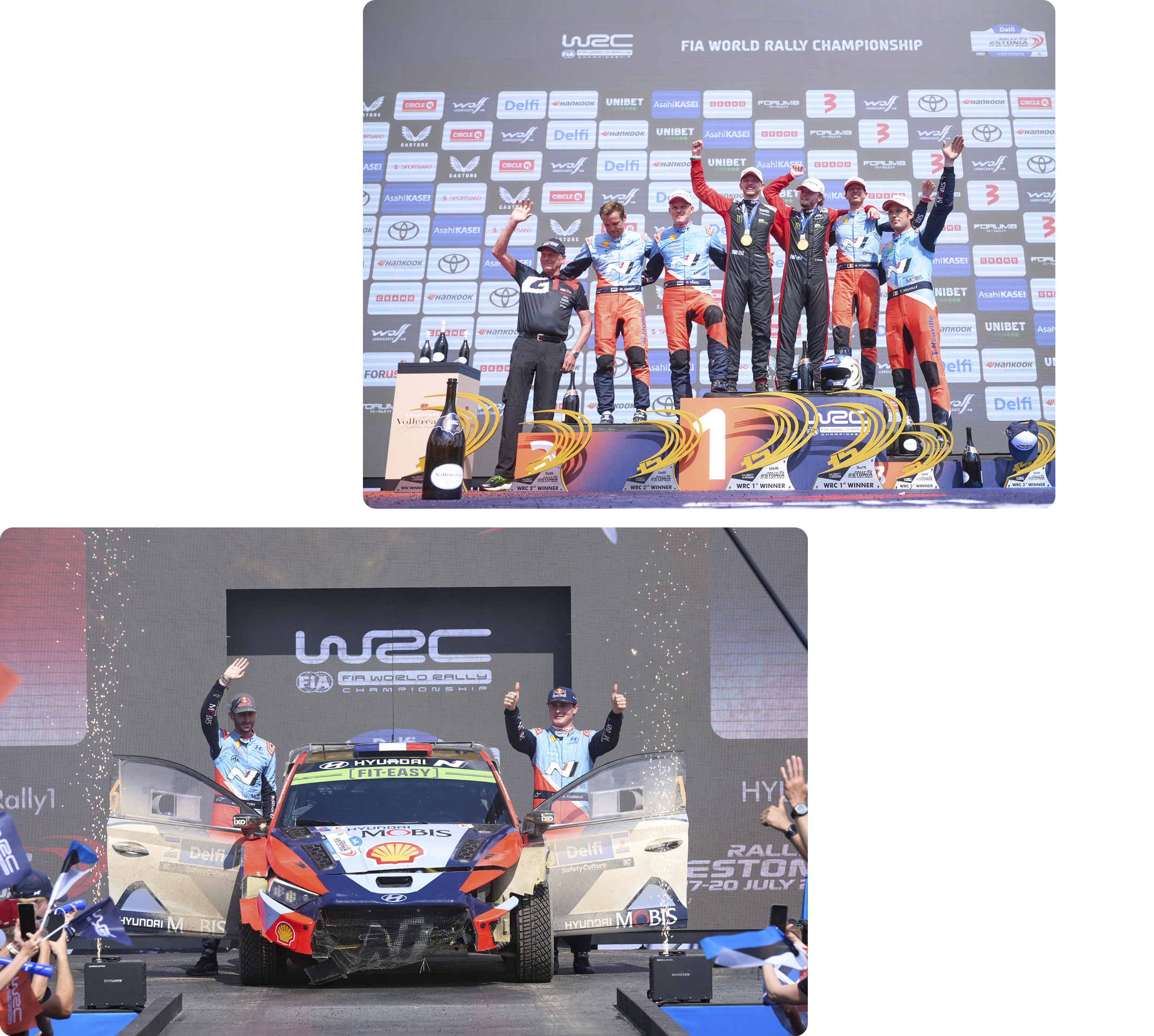
Solberg was visibly emotional after taking his first WRC victory—especially driving the Yaris Rally1 for the first time and going toe-to-toe with seasoned veterans. Though the trophy went to Solberg and Toyota, the real winners were Hyundai. Solberg wasn’t eligible for manufacturer points, so Tänak and Neuville’s double podium allowed Hyundai to gain ground in the championship. Tänak leapfrogged Evans by a single point to take the drivers' championship lead, and the manufacturer gap to Toyota shrank from 65 to 52 points.
WRC Round 9 takes place July 31 to August 3 in Finland—another lightning-fast gravel event and the home rally for both Toyota and Rovanperä.
By Soo-jin Lee
In 1991, Lee’s passion for cars led him to enthusiastically write letters to the newly launched Korean car magazine
